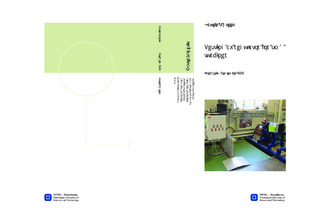Testing av regulator for små turbiner
Master thesis
Permanent lenke
http://hdl.handle.net/11250/235389Utgivelsesdato
2013Metadata
Vis full innførselSamlinger
Sammendrag
In this master thesis, an experimental setup for a stand-alone power system has been installed and tested in the Waterpower Laboratory at NTNU. The experimental test rig consisted of a cross-flow turbine, a synchronous generator and an electronic load controller (ELC) manufactured by Remote HydroLight in Afghanistan. The objective of the experiments was to evaluate the performance of the ELC regarding step response in frequency and generator voltage. The controller used phase angle regulation and triacs to divert excess energy to dump loads. The dump loads were heating elements installed and submerged in the lower reservoir in the laboratory. A similar configuration was installed for varying the user load in the energy system. Several tests were performed to evaluate the performance of the ELC. A weak component in the test rig was the transmission system that started to slip. This resulted in an increase in turbine speed during the experiment and reduced the quality of the results. However, the tests indicated that a rapid single peak appears during abrupt disconnection and connection of loads. This may disturb and damage sensitive electronic equipment. Despite this, the ELC performed well during the diffent tests with stable regulation in voltage and frequency.Introducing pulse width modulation would eliminate the unfavorable influence of the triacs in the generator voltage signal. With this modification it is possible to increase the flexibility in the energy system by introducing inductive or conductive loads like a battery bank.A hybrid stand alone energy system connecting existing test rig with a photovoltaic-module has been developed. For a larger and more complex energy system, a more sophisticated system has been designed. Both systems are based on a common DC-grid and charging of a battery bank. This results in a more flexible, reliable and a more stable energy system.
